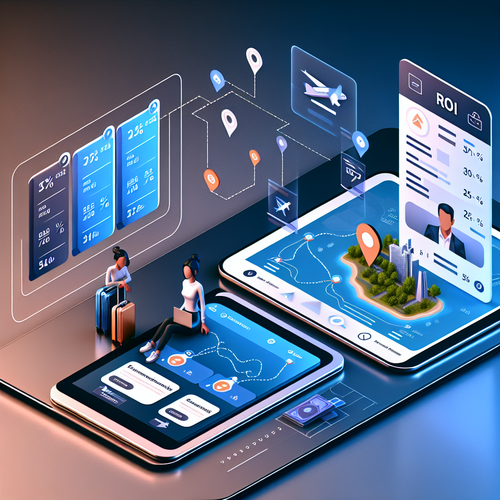🤖 How an AI Agent for Trip Planning and Tourism Works — Core Mechanics & Traveler Benefits
AI agents for trip planning leverage advanced algorithms to streamline the comprehensive travel arrangement process. The system begins with preference profiling, where travelers input their interests, budget, time constraints, and travel style. This profile guides the AI in gathering data from multiple sources including flight and hotel databases, local experience platforms, and real-time reviews. By ingesting such diverse data, the AI generates personalized itineraries that reflect individual tastes and logistical feasibility. Moreover, these agents dynamically adjust plans based on live updates like flight delays, weather changes, or availability shifts, ensuring resilience on the trip. For example, if a flight is delayed, the AI can automatically suggest alternative connections or amend hotel check-in times. Travelers benefit from significant time savings by avoiding manual searches and enjoy curated recommendations aligned with their desires, enhancing satisfaction. For operators, the AI enables scalability by automating customer interactions and reduces costs linked with manual planning while promoting higher conversion rates.
🌟 Top Features of an AI Travel Agent for Trip Planner and Tourism
AI travel agents incorporate multiple high-impact features that enhance both user experience and business growth. Personalized itinerary building creates tailor-made travel plans respecting user budget and preferences, increasing engagement and loyalty. Transport and route optimization considers the fastest, cheapest, or most scenic routes, improving traveler convenience and reducing logistical friction. Local recommendations leverage machine learning to suggest authentic experiences, boosting discovery and trip satisfaction. Dynamic price monitoring and alerts allow travelers to seize optimal deals, driving conversion and repeat usage. Group collaboration tools facilitate planning among multiple travelers through shared itineraries and chat, increasing platform adoption among families and friends. Finally, 24/7 conversational support powered by AI chatbots quickly resolves queries and booking issues, reducing operational costs. While implementing these features, businesses must balance development speed against the complexity of data integration and personalization model accuracy to maximize ROI without compromising user satisfaction.
🌍 Real-world Use Cases & ROI of AI Agents in Trip Planning and Tourism
AI agents have demonstrated impactful results across diverse traveler types and industry stakeholders. For solo travelers, platforms like Layla.ai offer rapid itinerary generation based on personal interests, reducing planning time by up to 70%, enhancing convenience and enabling spontaneous trips. Family travelers benefit from group-friendly collaborative planning tools and optimized accommodation options that balance budgets and preferences. Business travelers gain from AI’s ability to integrate meetings and travel logistics efficiently, minimizing downtime. On the business side, tour operators and OTAs using AI agents report measurable ROI through higher conversion rates—sometimes increasing bookings by 15-30%—while reducing customer service calls and booking costs by up to 25%. Destination Management Organizations (DMOs) leverage AI insights to tailor marketing and improve visitor engagement based on data-driven patterns. These cases establish AI agents as valuable tools driving both customer satisfaction and operational efficiencies.
🏛️ Implementing AI Agents for Trip Planning: Integration & Best Practices for Travel Businesses
Travel businesses seeking to implement AI agents should follow a strategic approach to maximize benefits and mitigate risks. Choosing between white-label solutions and SaaS platforms depends on desired customization, control, and time-to-market priorities. Integration typically involves API-based data pipelines connecting flight, hotel, and experiences providers alongside CRM systems to enable seamless user journeys. Robust privacy and consent protocols compliant with GDPR and CCPA must be enforced to safeguard traveler data and build trust. Adopting phased testing—starting with pilot groups and A/B experiments—helps validate functionality and user acceptance before full rollouts. Staff training is essential to equip customer service teams to complement AI interactions and manage exceptions effectively. Key performance metrics to monitor include Net Promoter Score (NPS), conversion rates, time-to-itinerary completion, and cost-per-lead to measure success. Common pitfalls include over-reliance on automation without human oversight and neglecting data quality, both of which can erode user confidence.
🧳 Quick Start Guide for Travelers: How to Get the Most from an AI Trip Planner
Travelers can maximize benefits from AI trip planners by following simple practical steps. Begin by clearly setting travel preferences such as destinations, interests, budget, and travel dates to ensure tailored recommendations. Verify bookings and receipts directly through the app or linked provider portals to avoid fraudulent offers. Utilize group collaboration features to share itineraries and preferences with travel companions, streamlining coordination. For unexpected itinerary changes or cancellations, rely on the AI’s real-time alerts and automated refund assistance to minimize disruptions. Travelers should cross-check AI suggestions with reputable reviews and official booking channels to validate accuracy and reduce risk. To enhance service quality, consider upgrading to premium tiers that offer comprehensive concierge support and exclusive deals. These tips empower users to travel confidently and efficiently while leveraging AI innovations.

